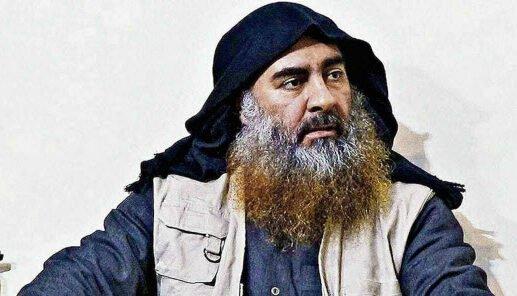
Terrorist organisation ISIS is regrouping and once again sowing its seeds of violence
The Islamic State armed group has been largely weakened in recent years, but under its new leader, Abu Ibrahim al-Hashimi al-Qurashi, the terrorist organisation is regrouping and once again sowing its seeds of violence.
It was not until a week after the death of the Islamic State leader Abu Bakr al-Baghdadi in October 2019 in Idlib, Syria that the successor to the self-proclaimed Caliph was appointed: Muhammad Said Abd Al Rahman al-Mawla, officially known as Abu Ibrahim al-Hashimi al-Qurashi.
Once an unknown man, he is often referred to by his nickname Abu Omar al-Turkmani, or simply al-Turkmani, the Turkmen.
“Jihadist propaganda was thus trying to give credence to the fiction surrounding the leader, not only of Arab descent, but also a descendant of the Prophet Mohammed through his Quraych tribe and his Hashemite clan,” explains Jean-Pierre Filiu, a professor in the contemporary Middle East history at Sciences-Po in Paris.
Al-Turkmani is a veteran of the organisation and will have the difficult task of guiding Islamic State (IS) through a tumultuous period in the organisation’s history. But the group often lands back on its despite the challenges at hand.
His path to IS
Reliable information on this leader of the terrorist group is quite rare and can be counted on one hand.
Born in the Iraqi town of Tal Afar (a Turkmen enclave), 70 kilometres west of Mosul, he is a former officer in Saddam Hussein’s army, like many cadres of the Islamic State armed group.
What is worth noting is a non-Arab is now head of the organisation, which until then had been essentially run by Iraqis since the creation of Al Qaeda in Iraq by the Jordanian Abu Musab al-Zarqawi (who died in 2006).
The town of Tal Afar, has been a source of many army and police officers to Saddam Hussein. “When the Iraqi despot – Saddam Hussein – abandoned all secular pretensions to mobilise Salafist networks to his benefit, Tal Afar’s Sunni militants were at the forefront of such a movement,” says Filiu.
“After the American invasion of 2003, they largely joined the jihadist insurgency,” he adds.
This is also the case of al-Turkmani: when Saddam Hussein was deposed following the Anglo-American invasion of 2003, he joined the jihadist insurgency.
– In 2004, al-Turkmani was imprisoned in the American prison of Bucca.
– There he met his predecessor, Abu Bakr al Baghdadi. Both men have a background in Islamic studies.
The new Caliph is also known to have been at the centre of the ethnic cleansing strategy used against the Yezidi minority in Iraq.
The resurgence of the Islamic State in Iraq and Syria
The Iraqi researcher and specialist on the Islamic state, Hisham al-Hashimi – assassinated by unknown gunmen on 6 July – had confided to Jeune Afrique that Daech (IS name in arabic) has the capacity to regenerate.
“This regeneration strategy has three stages: training and gathering resources (soldiers and weapons), then starting up and preparing the terrorist system, and finally taking control of the territory on which the group will be able to impose its policy and create a kind of economy that will be able to support it.”
According to a report published in January 2020 and compiled by the UN monitoring team, “after the losses of its [IS] territories, [it] began to reaffirm its presence in the Syrian Arab Republic and Iraq, fomenting more and more daring attacks.” The UN report that was submitted to to the UN Security Council says IS still has $100m available, which partly explains the resilience of the terrorist group.
Indeed, the Islamic State armed group continues to exploit security and governance gaps as it has done since its inception. In the first four months of 2020, 566 attacks took place in Iraq killing at least 35 people.
IS has been able to make use of the increasingly volatile and unstable state of Iraqi politics since a mass protest movement erupted in October bringing down the Prime Minister Adel Abdel Mahdi. Since then protests continue along with power cuts in central Baghdad, while the growing tensions between the Iraqi Government and the Kurdistan Regional Government over disputed territories further fragment the already weak government.
The chaotic situation in neighbouring Syria does not help either.
The “Peace Spring” operation launched by Turkey in October 2019 in north-east Syria against the Syrian Democratic Forces (SDF), composed mainly of Kurdish fighters, amplified the Syrian crisis. The offensive aimed to eliminate Kurdish fighters and establish a corridor extending over the entire 900 kilometre Syrian-Turkish border to resettle some of the more than three million refugees that Turkey is hosting.
While Ankara’s ultimate goal may be to eliminate the self-administered area of northeastern Syria known as Rojava and take control of the FDS-controlled Deir-ez-Zor oil fields, currently the International Committee of the Red Cross (ICRC) is warning that the vacuum created by the COVID-19 pandemic coupled with Turkey’s operation could instead be exploited by jihadist groups, particularly IS, which has already shown how it can regenerate under such circumstances.
Bottom line
Al-Turkmani is a veteran of the organisation and will have the difficult task of guiding Islamic State (IS) through a tumultuous period in the organisation’s history. But the group often lands back on its feet despite the challenges at hand.
Source: The Africa Report





